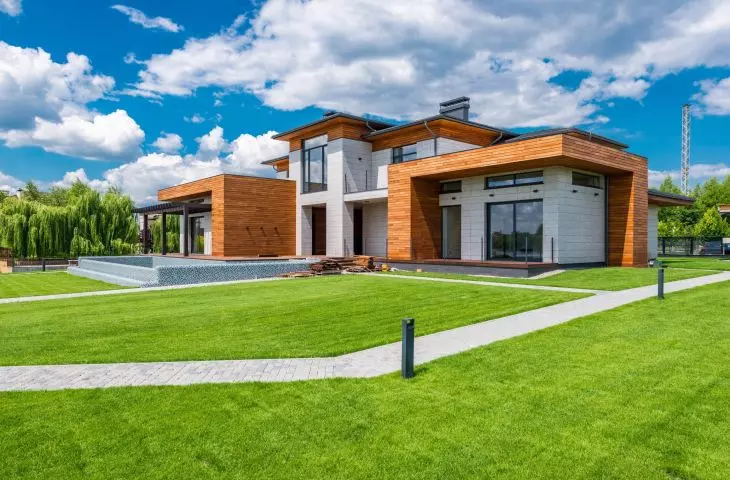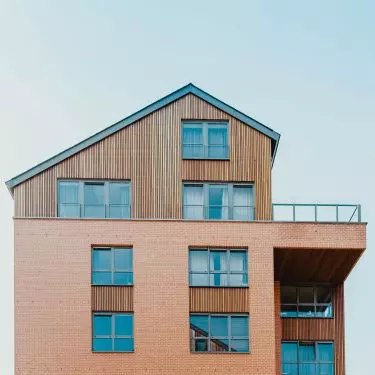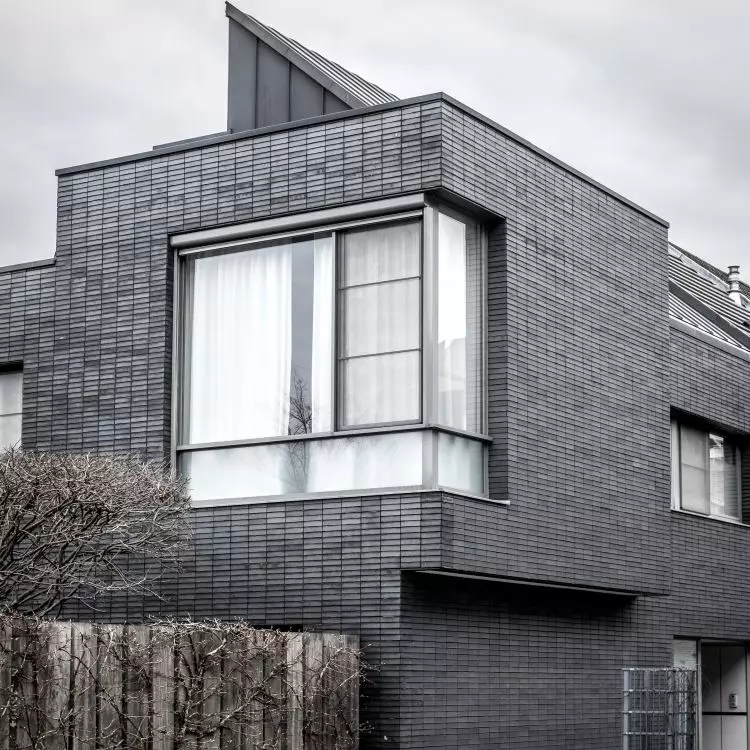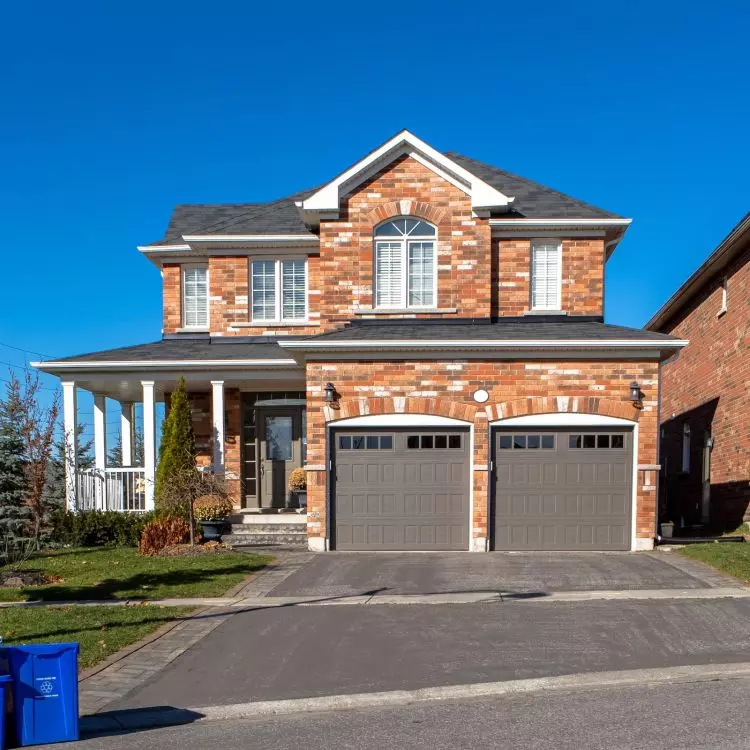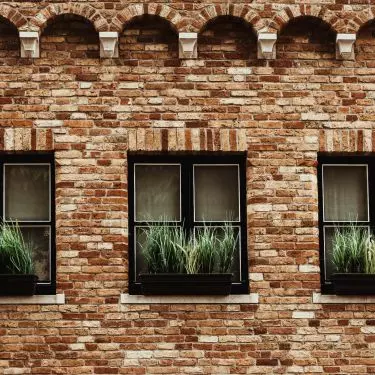Looking for an idea for a stylish facade for your dream home? Start with clinker tiles. Learn about their advantages and see if any product will give you more possibilities. Clinker tiles are a surefire way to stand out from the ranks of similar buildings and design a facade perfectly suited to your needs. Durable, environmentally friendly and maintenance-free, clinker facade is perfect for finishing the entire building or just its elements. It all depends on you and your vision! Learn more and choose the material that will dress your home in timeless elegance.
Bricks and clinker tiles — what are the differences?
In a moment you will see the great variety of clinker products, but let's start at the very beginning. Clinker is a natural ceramic material, made from clay. It is an ecological raw material, healthy and resistant to practically everything. Many thousands of years of use in construction speak for it.
You need to know that today the latest technology is used to make clinker products and the stoves in which the bricks are produced reach temperatures as high as 1000°C. All this translates into the properties of modern finishing materials: their non-flammability, frost resistance, as well as extremely low water absorption (about 6%).
If you are convinced to this material, you have two products to choose from — clinker tiles and bricks. Let's find out how they differ!
Thanks to the latest technology, facade tiles have excellent parameters: non-combustibility, frost resistance and low water absorption.
Photo by Judy Beth Morris © Unsplash
Clinker tiles on double-layer walls
Tile is a thinner and lighter counterpart of brick, its thickness ranges from 8-20 mm. It is a typical finishing product: installation involves attaching it with adhesive mortar to a plaster-covered double-layer wall. A clinker tile facade can cover the entire walls of a building up to a height of 7 m, or only parts of them: corners, plinths, window frames. It is also a great way to refresh the facade of older buildings during their renovation.
Clinker bricks on three-layer walls
A clinker brick is about 65-71 mm wide. It is laid as a covering layer in three-layer walls. Much heavier bricks have a big impact on the weight of the wall, so for this technology you need to prepare a wide enough foundation. If you want to finish the walls with clinker bricks, you need to make this decision at the design stage. However, the advantage of bricks is more effective protection against heat loss and high resistance to mechanical damage.
Is a stylish clinker facade expensive?
If you want an elegant facade in line with the latest trends for your house, you need to prepare for some costs. The good news is that clinker facade is not the most expensive finishing material, and the price of products in this group has a really wide range. Of course, estimating the exact cost of a clinker facade is very difficult, but let's try to think about what has the greatest impact on it:
-
the facade of a house made of ceramic materials will always be more expensive than simple plastering,
-
The prices of clinker tiles mean one m² or packet of material (and start from PLN 50), but you can also meet the price for a single tile (from PLN 2),
-
Hand-formed bricks are the most expensive type of ceramic material,
-
corner bricks and clinker tiles reach up to twice the price of the standard material,
-
an important part of the cost of the facade is labor: a good professional will lay a meter of tiles for PLN 70-100.
As an investor, but also the owner of your dream house, you also need to consider factors other than cost. The finishing of the exterior walls is an information about their status and good taste. For more ideas, see our authors' extensive articles on modern facades.
Hand-formed bricks are the most expensive type of ceramic materials. The second most expensive are tiles and corner bricks.
Photo by Maria Teneva © Unsplash
Clinker facade – why is it worth it?
Let's talk more about the advantages of clinker, which go far beyond its stylish appearance. Your home is an investment for years to come. When choosing finishing materials, you have the right to expect durability, protection and an unchanging appearance for decades. Does a facade made of clinker offer it?
Here are five facts that dispel all doubts!
-
Facade clinker is an extremely durable cladding. It is resistant to weathering, UV radiation and frost.
-
Its low absorbency makes it an excellent protection against water. The brick layer of the wall protects the interior from the development of fungi and mold, as well as the effects of heavy precipitation.
-
Exterior clinker is a material with good thermal insulation properties. It contributes to maintaining a stable temperature inside the building, which can minimize heating and cooling costs.
-
Clinker facade does not require any maintenance, and its cleaning is limited to washing with a high-pressure washer.
-
Walls covered with clinker facade are long-lasting, and difficult to damage mechanically. It is an ideal material for plinths and corners — the sensitive areas of any building.
Of course, different types of clinker materials differ in their properties. Much depends on the technology of their manufacture and the type of impregnation. Get to know their variety!
Facade clinker is an extremely durable cladding. It combines resistance to mechanical factors as well as frost, UV radiation and precipitation.
Photo: Bernard Hermant © Unsplash
Ideas for a stylish clinker facade
Clinker is a designer facade material with which you can create a house in any style you dream of. The huge variety of clinker facade tiles allows you to realize even the most daring ideas: from a traditional red brick facade to smooth house walls in a minimalist aesthetic. Clay is an extremely malleable material, from which products of various shapes, sizes, textures and colors are created. Let's see if you can find something for you among them!
Clinker facade for a traditional building
The timeless and always fashionable red brick facade is an excellent idea for finishing a house in a traditional style. However, you need to know that classic rust red is just one of a wide range of shades of facade tiles. It's due to modern production technologies: the use of mineral admixtures that change the color of the clay, the reduction of oxygen during firing, or the engobing and glazing processes of the finished bricks. So the traditional facade of your house can take on any color from white to deep anthracite.
You can achieve the look that imitates old walls by selecting a brick with the right texture. After all, natural bricks are not perfectly smooth, but have a raw roughness on which light refracts. Such an effect is given by hand-formed bricks and tiles with a specially prepared surface: sandblasted, battered, split or scratched. If you choose the right combination of color with brick structure, the visual effect in the form of a traditional wall will be very natural!
If you find the right combination of color and brick structure, the visual effect in the form of a traditional wall will be very natural.
Photo by Dillon Kydd © Unsplash
Clinker facade in a minimalist style
Modern buildings with a minimalist aesthetic are associated with a gray palette and walls with a smooth texture. Can such an effect be achieved with ceramic materials? By all means! When designing the facade of a modern house, opt for tiles with a smooth and shiny surface. Choose a shade from a cool gray palette, remembering to match the appearance of the roof and other finishing elements. To achieve a smooth tile effect on the house wall, install the tiles as unobtrusively as possible. The color of the joint should be similar to the shade of the tiles, and the partitions between them should be as thin as possible. You can also opt for elegant LDF tiles with an extended format (290 × 115 × 52 mm), which will reduce the need for grouting and emphasize the modern character of the building.
When designing the facade of a modern building, it is worth choosing tiles with a smooth surface in a shade from the palette of cool grays.
Photo: Bernard Hermant © Unsplash
Versatile and elegant tiles naturally combine with other finishing materials, so you do not have to completely abandon plaster, stone or wood. If you opt for a combination of these elements, you can be sure that your home will stand out from others. True, a clinker facade requires labor and resources, but in return it guarantees the durability and satisfaction of a good choice. There is nothing more pleasant than seeing the walls of your own home looking exactly as in your dreams.
Are you building a house? We have more information about elevation for you



